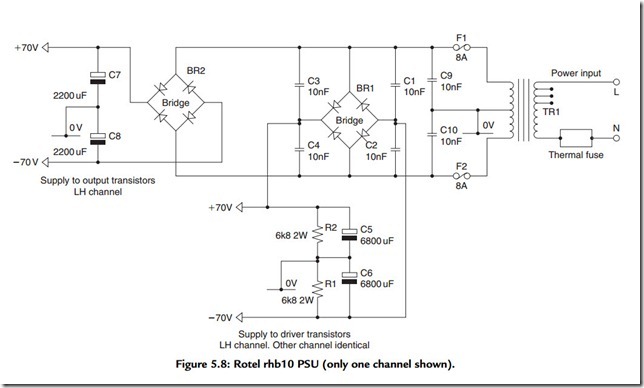Typical Contemporary Commercial Practice
The power supply circuit used in the Rotel RHB10 330-W power amplifier is shown in Figure 5.8 as an example of typical modern commercial practice. In this design two separate mains power transformers are used, one for each channel (the drawing only shows the LH channel—the RH one is identical) and two separate bridge rectifiers are used to provide separate ±70-V DC outputs for the power output transistors and the
driver transistors. This eliminates the distortion that might otherwise arise because of breakthrough of signal components from the output transistor supply rail into the low power signal channel. Similarly, use of a separate supply system for each channel eliminates any power supply line-induced L–R cross talk that might impair stereo image positioning.
Battery Supplies
An interesting new development is the use of internally mounted rechargeable batteries as the power supply source for sensitive parts of the amplifier circuitry, such as low input signal level gain stages. Provided that the unit is connected to a mains power line, these batteries will be recharged during the time the equipment is switched off, but will be disconnected automatically from the charger source as soon as the amplifier is switched on.
Switch-Mode Power Supplies
Switch-mode power supplies are widely used in computer power supply systems and offer a compact, high efficiency regulated voltage power source. They are not used in hi-fi systems because they generate an unacceptable level of HF switching noise due to the circuit operation. They would also fail the requirement to provide high peak output current levels.
